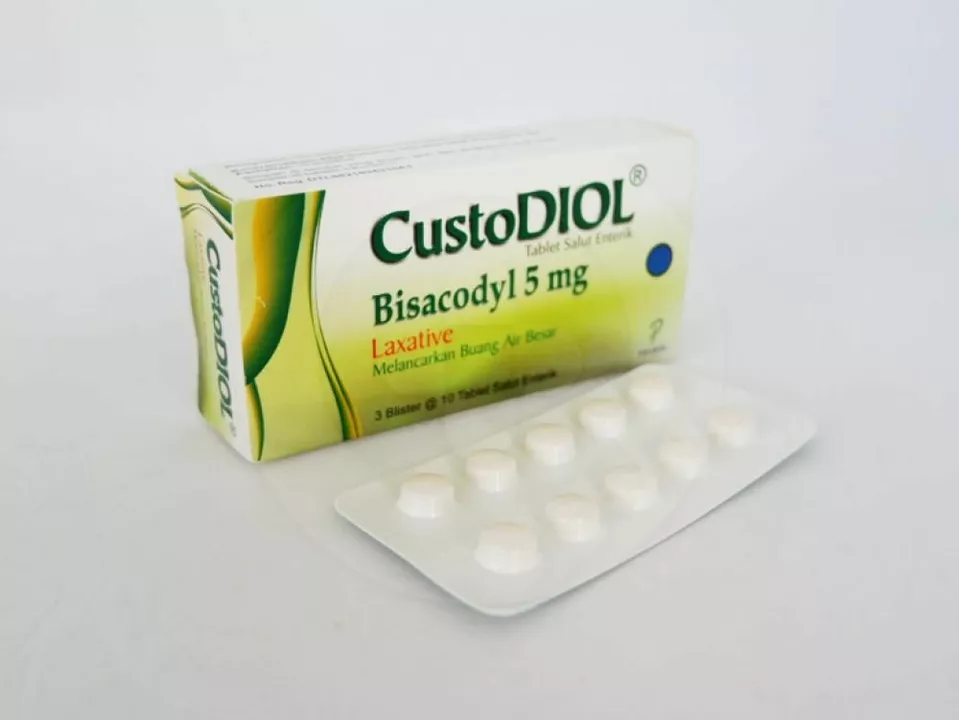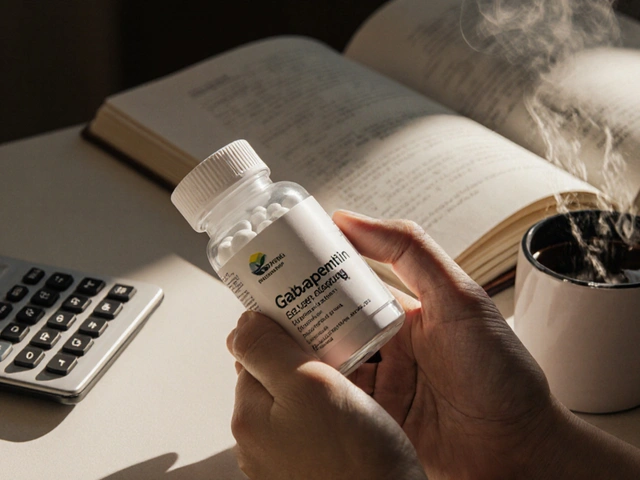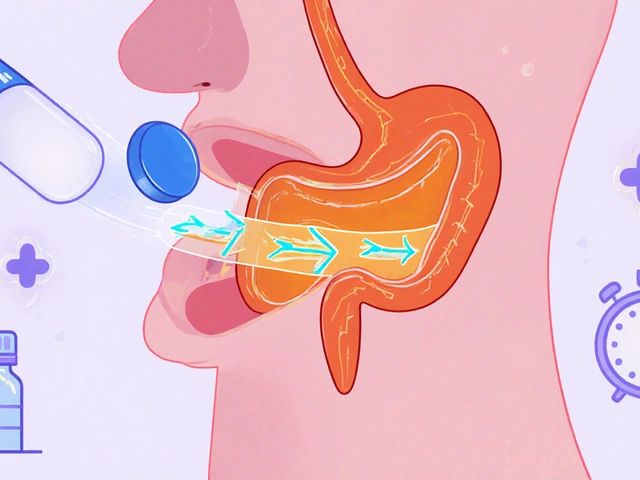 5
May,2023
5
May,2023
Understanding Bisacodyl: The Basics
Bisacodyl is a common over-the-counter medication that is widely used as a laxative to treat constipation. Before we delve into the science behind this popular drug, let's first understand the basics of its chemical structure and its various forms. Bisacodyl is typically available in oral tablets, suppositories, and even in enemas. Its primary function is to stimulate the intestines, leading to bowel movements and relief from constipation.
Now that we have a general idea about bisacodyl, it's time to explore the fascinating science behind its workings. In the following sections, we will discuss how bisacodyl interacts with our body to produce its desired effects and explore the factors that make it a popular choice among patients and healthcare professionals alike.
How Bisacodyl Stimulates the Bowel
The primary action of bisacodyl is to stimulate the muscles of the colon, also known as the large intestine. It does so by irritating the lining of the intestinal wall, which in turn causes the muscles to contract more vigorously. These contractions, known as peristalsis, push the contents of the colon toward the rectum, eventually leading to a bowel movement.
Additionally, bisacodyl also interacts with the nerves in the intestinal wall, amplifying the sensation of fullness and the urge to have a bowel movement. This dual action of muscle stimulation and nerve activation is what makes bisacodyl an effective laxative for many people.
Increasing Fluid Secretion in the Colon
Bisacodyl also works by promoting the secretion of fluids into the colon. This increased fluid content helps to soften the stool, making it easier to pass. This is particularly useful for those suffering from hard, dry stools that can be difficult to eliminate.
By drawing water into the colon, bisacodyl helps to create a more hospitable environment for bowel movements, allowing the stool to move more smoothly through the intestines and providing relief from constipation.
The Importance of Timing: When to Take Bisacodyl
One of the key factors in using bisacodyl effectively is understanding when to take it. The medication is typically taken at bedtime, as it generally takes around 6 to 12 hours for bisacodyl to produce a bowel movement. This means that most people will experience relief from constipation in the morning after taking the medication the night before.
It's also important to note that bisacodyl should not be taken within an hour of consuming dairy products, antacids, or other medications that could alter the acidity of the stomach. This is because changes in stomach acidity can affect the way bisacodyl is broken down and absorbed, potentially reducing its effectiveness.
Precautions and Side Effects
While bisacodyl is generally considered safe for most people, there are some precautions to be aware of. First, it is not recommended for long-term use, as overuse can lead to dependence and a disruption of the normal functioning of the digestive system. If constipation persists for more than a week or becomes severe, it's important to consult a healthcare professional for further evaluation and guidance.
Some common side effects of bisacodyl include cramping, abdominal pain, and diarrhea. These side effects are generally mild and should resolve on their own. However, if they persist or worsen, it's essential to consult a doctor for advice. Additionally, bisacodyl should not be used by individuals with certain medical conditions, such as intestinal obstruction or inflammatory bowel disease, without first discussing its use with a healthcare professional.
Why Bisacodyl is a Popular Laxative Choice
In conclusion, bisacodyl has become a popular laxative choice for many people due to its dual action of stimulating bowel movements and promoting the secretion of fluids into the colon. This combination makes it an effective option for those suffering from constipation, providing relief in a relatively short amount of time.
However, as with any medication, it's important to use bisacodyl responsibly and to be aware of any potential side effects or precautions. By understanding the science behind bisacodyl and how it works within our bodies, we can make informed decisions about its use and enjoy the benefits it offers in alleviating constipation.





Alright, let me break this down for you, because clearly the mainstream medical narrative is hiding something-bisacodyl isn’t just a harmless stool‑softener; it’s a cocktail of synthetic stimulants, a little‑known neuro‑active agent, and, rumor has it, a trace of an undisclosed polymer that could, in theory, affect gut motility long after the advertised six‑to‑twelve‑hour window; moreover, the timing instructions are suspiciously convenient for those who want you to experience the “miracle” in the morning, aligning perfectly with peak advertising cycles, and don’t even get me started on the proprietary “enteric coating” that may actually be a delivery system for something far more… invasive.
While I appreciate the enthusiasm, the evidence does not support the notion of a covert polymer or neuro‑active contaminant in bisacodyl; peer‑reviewed pharmacological studies consistently identify bisacodyl as a diphenylmethane derivative that exerts its laxative effect via direct stimulation of colonic smooth muscle and promotion of electrolyte‑driven fluid secretion-nothing more exotic than that. The timing recommendation aligns with the drug’s pharmacokinetics, not a marketing ploy, and the enteric coating simply protects the active moiety from premature gastric degradation.
It is imperative to recognize, with utmost precision, that bisacodyl operates primarily through the activation of the enteric nervous system-stimulating peristaltic waves and enhancing mucosal secretion; this dual mechanism is well‑documented in clinical pharmacology texts. 📚 Moreover, the drug’s onset of action, typically six to twelve hours post‑administration, reflects its metabolic conversion to the active metabolite desacetyl‑bisacodyl, a process that is neither clandestine nor conspiratorial. 🧪🧠
Hey folks! 👋 If you’re looking for a quick overview: bisacodyl works by irritating the colon lining, which triggers stronger muscle contractions and draws water into the stool. ✅ Take it at night, stay hydrated, and you’ll usually see results by morning. Just avoid using it every day-your gut will thank you! 👍
Listen up! Bisacodyl is a powerhouse-it punches the colon into action and floods it with fluid. 🚀 If you’re stuck, one tablet before bed is all you need. Don’t be lazy, stay consistent, and you’ll beat constipation like a champ! 💪
Oh, wonderful, another “science‑backed” article about bisacodyl-because the world was really trembling with anticipation for a detailed exposition on why we should irritate our intestines, right?; I mean, who doesn’t love a good excuse to pop a tablet and feel a delightful cramp in the morning, as if that’s the highlight of one’s daily routine?; The author painstakingly explains peristalsis, fluid secretion, and timing, as if those aren’t already etched into the collective consciousness of anyone who’s ever suffered from a sluggish bowels; And let’s not forget the ever‑so‑subtle warning about long‑term use-because apparently, we all have the luxury of being able to “consult a healthcare professional” before a regular bathroom schedule becomes an art form.; Honestly, if I wanted a lecture on colon mechanics, I’d read a physiology textbook, not a Reddit‑style post that tries too hard to be helpful. ; Still, kudos for the thoroughness-nothing like over‑explaining the basics to make the content feel indispensable. ;
Great, now I know how to schedule my bathroom break like a corporate meeting.
i guess bisacodyl does it's thing by makin the gut move and pull in water, kinda like a gentle push from the inside, pretty neat if u need it.
Bisacodyl is basically your colon’s personal trainer-it wakes up the muscles, adds some water, and gets things moving. 👍 It’s super effective when you take it right before bed, so you’re ready for a fresh start in the morning. Just remember: don’t overdo it, and stay hydrated! 😊
In the grand tapestry of pharmacological marvels, bisacodyl occupies a niche both humble and profound, a modest diphenylmethane derivative that nonetheless commands the very rhythm of our digestive symphony. Its mechanism, while ostensibly simple, unfolds with a choreography that would humble the most seasoned ballet master-first, the drug’s insoluble tablet survives the gastric gauntlet, only to surrender its active metabolite within the colon’s welcoming milieu. Upon release, desacetyl‑bisacodyl engages the enteric nervous system, coaxing the intrinsic primary neurons into a fervent cascade of acetylcholine, thereby igniting peristaltic waves of an intensity rarely witnessed in the quiet affairs of everyday life. Simultaneously, the drug augments chloride secretion via the CFTR channels, a maneuver that draws water avidly into the lumen, ensuring the stool attains a pliable consistency. These twin forces-muscular contraction and luminal hydration-collaborate to transform a stagnant colon into a bustling thoroughfare, an internal metropolis of motion. One must also appreciate the temporal elegance of bisacodyl; the six‑to‑twelve‑hour latency before onset is not a flaw but a deliberate pharmacokinetic grace, allowing the drug to traverse the alimentary canal and assume its destiny at the precise moment of nocturnal repose. The nocturnal dosing recommendation, therefore, is an ode to circadian alignment, a synchronization of pharmacology with the body’s natural rhythms. Yet, as with any potent agent, restraint is paramount; chronic reliance precipitates a descent into dependence, wherein the colon’s intrinsic motility wanes, awaiting the drug’s summons. Thus, the clinician’s counsel to limit usage is a benediction, preserving the organ’s autonomy. Moreover, the spectrum of adverse effects-cramping, abdominal discomfort, occasional diarrhea-serves as a reminder that even the most calculative design cannot elude the capriciousness of human physiology. In the realm of over‑the‑counter remedies, bisacodyl stands as a testament to the delicate balance between therapeutic gain and physiological perturbation. Its popularity is no accident; it offers a swift, reliable resolution to a vexing plight that plagues many a modern soul. However, the sagacious user must wield it with prudence, honoring both dosage instructions and the sanctity of the gut’s natural cadence. In summation, bisacodyl is a marvel of medicinal chemistry, an orchestrator of colonic motion, and a reminder that even the simplest of compounds can wield profound influence over our bodily functions.
Yo! 🚀 Need a nudge for the bathroom? Bisacodyl’s got your back-just pop a tablet at night, drink some water, and you’ll be on your way in the AM. No drama, just results! 🙌
Just a heads‑up: if you’re mixing bisacodyl with other meds, double‑check for interactions; it’s better safe than sorry.
The recommended dosage should be adhered to; exceeding the suggested amount may lead to unnecessary discomfort and potential complications.
bisacodyl works by making u pooop more easy, just take it at nite and drink water alot.
One might contemplate the existential metaphor of a laxative-how it nudges the body to release what it has hoarded, mirroring our own need to let go of buried sorrows before we can truly move forward.